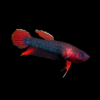-
×
 Golden Eyes Vampire Crab - Geosesarma Sp. - Decapod Crustacean
1 × £8.71
Golden Eyes Vampire Crab - Geosesarma Sp. - Decapod Crustacean
1 × £8.71 -
×

-
×

-
×
 6 x Rosy Phantom Tetra: A Graceful Jewel of the Aquarium Scientific Name: Hyphessobrycon rosaceus, Vibrant Schooling Fish for Freshwater Aquariums, Enhance Your Tank's Visual Appeal Today.
2 × £17.42
6 x Rosy Phantom Tetra: A Graceful Jewel of the Aquarium Scientific Name: Hyphessobrycon rosaceus, Vibrant Schooling Fish for Freshwater Aquariums, Enhance Your Tank's Visual Appeal Today.
2 × £17.42 -
×
 Red Devil Vampire Crab - Geosesarma Hagen - Decapod Crustacean
1 × £8.71
Red Devil Vampire Crab - Geosesarma Hagen - Decapod Crustacean
1 × £8.71
Subtotal: £227.42












Emily Carter (verified owner) –
I recently added the Thiara Scabra, also known as the Hedgehog Snail, to my freshwater aquarium, and I couldn’t be happier! After about two weeks, I’ve noticed a significant decrease in algae buildup. These little aquatic pets are not only efficient algae eaters but they also have such unique personalities. Watching them glide across the substrate is truly a delight! Unlike some other snails I’ve tried, the Hedgehog Snail stays active and doesn’t just hide all day.
They’re perfect for a community tank too, as they peacefully coexist with my fish without causing any stress. I did notice that they love to munch on biofilm, so if you have an older tank with natural debris, they’ll thrive! The only minor concern is that they can be a bit shy initially, but with patience, they come out more as they acclimate.
Shipping was prompt, and they arrived in great condition. I highly recommend the Thiara Scabra for anyone looking to naturally maintain tank cleanliness while adding character to their setup. If you’re a fellow fish enthusiast wanting to enhance your aquatic environment, this freshwater snail is a fantastic choice!
Emily Carter (verified owner) –
I recently added several Thiara Scabra snails to my freshwater tank, and I couldn’t be happier! These adorable little snails have not only enhanced the beauty of my aquarium but have also made aquarium maintenance a breeze. After about two months, I’ve noticed a significant reduction in algae due to their voracious appetite for it. They especially love algae wafers, which I supplement in their diet, and they seem to thrive! I initially considered other freshwater snails, but the thorny rook snails have a unique charm and personality that really adds character to my tank. One minor concern is that they can be a bit shy at first, so I recommend giving them some time to acclimate. Overall, I wholeheartedly recommend these snails to anyone looking to improve their aquarium’s health and aesthetics. Perfect for both beginners and seasoned aquarists alike! They shipped quickly and were packaged with care, arriving in excellent condition.